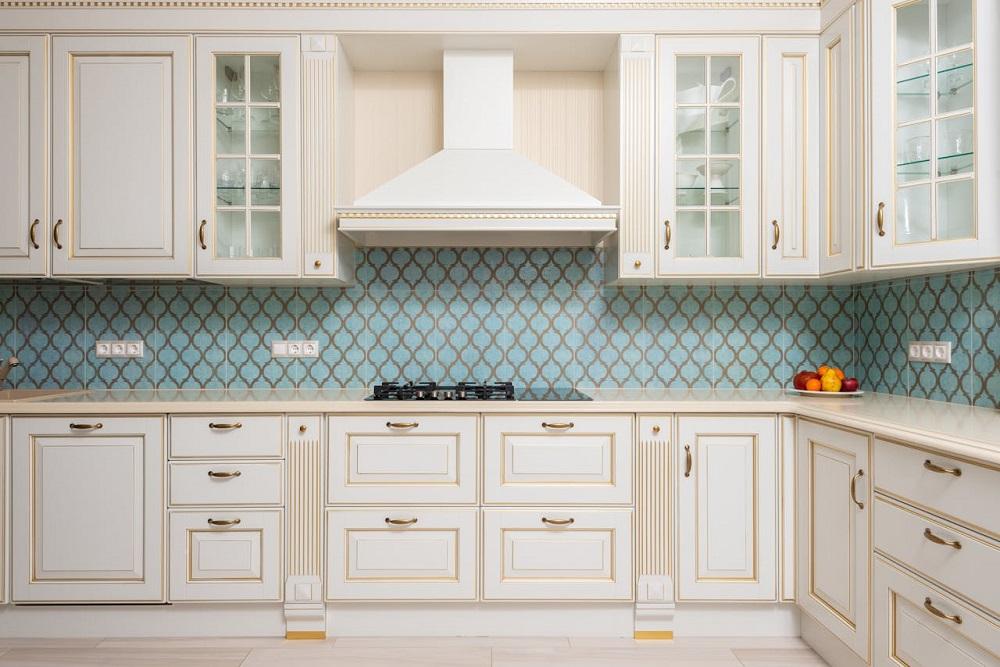
Aftermarket parts refer to any component that is not sourced from the original equipment manufacturer (OEM). These parts are typically produced by third-party companies and are often used for replacement or enhancement purposes.
Aftermarket parts encompass a diverse array, including elements for household appliances such as refrigerator shelves or washing machine drums.
There are two main types of aftermarket parts:
- Replacement Parts: These are designed to be identical to the original parts they’re replacing. They’re used when the original parts fail or wear out.
- Performance Parts: These are designed to improve the performance of the vehicle or appliance. They might enhance speed, efficiency, durability, or other aspects of performance.
Docking drawers, on the other hand, are innovative storage solutions that are built into furniture or cabinetry.
They are designed to house power outlets or charging stations, providing a convenient and clutter-free way to charge devices or power appliances.
Docking drawers can be installed in various locations such as kitchens, bathrooms, bedrooms, or offices, and are particularly popular in spaces where countertop or desk space is limited.
There are two main types of docking drawers:
- Power Docking Drawers: These are equipped with electrical outlets and are designed to power appliances such as hair dryers, blenders, or laptops.
- Charging Docking Drawers: These are equipped with USB ports or wireless charging pads and are designed to charge devices like smartphones, tablets, or smartwatches.
Both aftermarket parts and docking drawers offer a way to upgrade and customize your vehicle or living space, often at a lower cost than OEM parts or traditional built-in power outlets.
They also offer potential eco-friendly benefits, such as improved energy efficiency or the use of sustainable materials.
Understanding the Mechanics of Aftermarket Parts and Docking Drawers
Aftermarket parts and docking drawers contribute to an eco-friendly lifestyle in several ways.
- Reuse and Recycling: Many aftermarket parts are made from recycled materials or are designed to be recyclable themselves. This reduces the demand for new materials and helps to minimize waste.
- Energy Efficiency: Some aftermarket parts are designed to improve the energy efficiency of vehicles. For example, certain types of aftermarket tires can reduce rolling resistance, which can improve fuel efficiency.
- Longevity: High-quality aftermarket parts can often last longer than their OEM counterparts. This means that they need to be replaced less frequently, reducing the overall environmental impact.
Docking drawers can contribute to an eco-friendly lifestyle in the following ways:
- Space Efficiency: Docking drawers make efficient use of space, which can reduce the need for additional furniture or storage units. This can help to minimize the environmental impact associated with the production and disposal of furniture.
- Reduced Energy Consumption: Many docking drawers are designed with integrated charging stations for devices like smartphones and tablets. By centralizing charging in one location, it’s possible to reduce energy consumption.
- Durability: Like high-quality aftermarket parts, well-made docking drawers are designed to last. This reduces the need for replacements and minimizes waste.
In terms of function, aftermarket parts and docking drawers align with eco-friendly practices by promoting efficient use of resources, reducing waste, and minimizing energy consumption.
The Cost-Effectiveness of Aftermarket Parts and Docking Drawers
Aftermarket parts and docking drawers can be cost-effective in several ways, providing both immediate and long-term financial benefits.
Less Expensive
Aftermarket parts are typically less expensive than original equipment manufacturer (OEM) parts. This is because they are produced by independent companies, which do not have to factor in the high development and marketing costs that original manufacturers do.
As a result, consumers can often find aftermarket parts that perform just as well, if not better, than their OEM counterparts, but at a fraction of the price.
Improve Efficiency
Many aftermarket parts are designed to improve the efficiency of a vehicle or appliance, which can lead to significant savings over time.
For example, an aftermarket air filter might be designed to improve fuel efficiency, which can result in lower fuel costs in the long run. Similarly, an aftermarket energy-efficient light bulb can significantly reduce electricity costs over its lifespan.
Cost-effective for Homes and Offices
Docking drawers provide additional storage space without the need for extensive renovations or the purchase of additional furniture. This can be particularly beneficial in smaller spaces, where every square foot counts.
Moreover, docking drawers with built-in electrical outlets can eliminate the need for extension cords and power strips, which not only reduces clutter but also lowers the risk of electrical fires, potentially saving on insurance costs.
Both aftermarket parts and docking drawers can contribute to increased property value.
Improving Home and Vehicle Value

Aftermarket parts and docking drawers can indeed enhance the value of your home or vehicle, depending on the type of upgrade and the quality of the parts used.
Home Upgrades
Kitchen and Bathroom Upgrades
Aftermarket parts such as high-quality faucets, showerheads, and cabinet handles can significantly improve the look and functionality of your kitchen and bathroom, thereby increasing the overall value of your home.
Docking drawers, particularly those with built-in outlets, can add convenience and a modern touch to these spaces.
Energy Efficiency
Eco-friendly aftermarket parts like energy-efficient lighting fixtures, programmable thermostats, and water-saving plumbing fixtures can reduce utility bills, making your home more attractive to potential buyers who are conscious about energy consumption and long-term savings.
Smart Home Features
Aftermarket parts that add smart home features, such as smart locks, smart thermostats, and smart lighting systems, can increase your home’s value by making it more appealing to tech-savvy buyers.
Vehicle Upgrades
Performance Upgrades
High-quality aftermarket parts can improve a vehicle’s performance, making it more appealing to potential buyers. These upgrades might include parts that enhance the vehicle’s speed, handling, or fuel efficiency.
Aesthetic Upgrades
Aftermarket parts can also be used to enhance a vehicle’s aesthetics. Upgrades like new rims, custom paint jobs, or interior modifications can increase a vehicle’s value by making it more visually appealing.
Technology Upgrades
Installing aftermarket parts like a high-end stereo system, a backup camera, or a GPS navigation system can increase a vehicle’s value by adding modern conveniences that many buyers look for.
It’s important to note that not all aftermarket parts and docking drawers will increase the value of your home or vehicle. The quality of the parts, the professionalism of the installation, and the tastes of potential buyers all play a role.
Therefore, it’s important to carefully consider any upgrades and to invest in high-quality parts and professional installation.
Choosing the Right Aftermarket Parts and Docking Drawers

Choosing eco-friendly and cost-effective aftermarket parts and docking drawers requires careful consideration and research. Here are some key factors to consider:
Material Composition
The materials used in the manufacturing of aftermarket parts and docking drawers can significantly impact their eco-friendliness. Look for products made from recycled or sustainably sourced materials.
For instance, aftermarket parts made from recycled metal or plastic can reduce environmental impact. Similarly, docking drawers made from sustainably harvested wood or recycled materials are more eco-friendly.
Energy Efficiency
Energy efficiency is another crucial factor. Aftermarket parts that improve fuel efficiency or reduce energy consumption in vehicles are a good choice. Similarly, docking drawers with energy-efficient features, such as LED lighting or automatic shut-off features, can contribute to energy savings.
Durability and Lifespan
Products that last longer reduce the need for replacement, thereby minimizing waste. Check for the durability and expected lifespan of the aftermarket parts and docking drawers. Reviews and product specifications can provide this information.
Certifications
Look for products with eco-friendly certifications. These certifications, such as Energy Star for energy efficiency or FSC for responsibly sourced wood, assure that the product meets certain environmental standards.
Cost-Effectiveness
While upfront costs are important, consider the long-term savings as well. Aftermarket parts that improve fuel efficiency, for example, can lead to significant savings over time.
Similarly, high-quality docking drawers may have a higher upfront cost but can save money in the long run due to their durability and reduced need for replacement.
Supplier reputation
Consider the reputation of the supplier. Companies with a strong commitment to sustainability are more likely to offer eco-friendly and cost-effective products. Research the company’s environmental policies and practices to make an informed decision.
By taking these factors into account, you can make a choice that benefits both your wallet and the environment.
Avoiding Pitfalls in Aftermarket Parts and Docking Drawers Selection and Installation
When choosing and installing aftermarket parts and docking drawers, there are several common mistakes that consumers often make. These mistakes can lead to unnecessary costs, poor performance, and even damage to the home or vehicle.
Here are some of the most common mistakes and how to avoid them:
|
Common Mistake |
How to Avoid It |
| Choosing parts based solely on price | Balance cost with quality and reliability |
| Ignoring compatibility | Ensure parts will fit and function with your specific make and model |
| Overlooking energy efficiency | Consider energy consumption in addition to eco-friendliness |
| Improper installation | Hire a professional if unsure about installation |
| Neglecting maintenance | Perform regular maintenance to ensure proper function and efficiency |
By being aware of these common mistakes and taking steps to avoid them, consumers can make the most of their aftermarket parts and docking drawers, enjoying the benefits of cost-effectiveness and eco-friendliness without the drawbacks.
Aftermarket vs. Original: A Comparison
Aftermarket parts and docking drawers often serve as viable alternatives to their original counterparts.
Aftermarket parts can sometimes outperform original parts, especially if they are designed and manufactured by specialists in a particular component or system.
For instance, aftermarket brake pads may offer improved stopping power or longevity compared to original equipment manufacturer (OEM) parts.
Similarly, docking drawers can offer enhanced functionality, such as integrated power outlets or USB ports, that may not be present in the original cabinetry.
The durability of aftermarket parts and docking drawers can vary widely, depending on the quality of materials used and the manufacturing process.
Some aftermarket parts may be less durable than OEM parts if they are made with cheaper materials or less rigorous quality control. Conversely, high-quality aftermarket parts and docking drawers can potentially offer superior durability.
Consumers research and choose reputable brands to ensure they are getting a durable product.
In general, aftermarket parts and docking drawers tend to be more cost-effective than their original counterparts. This is because they are often produced in larger quantities and sold in a more competitive market, which can drive down prices.
However, it’s important to note that cost can sometimes be a reflection of quality, so a significantly cheaper aftermarket part may not offer the same performance or durability as an OEM part.





